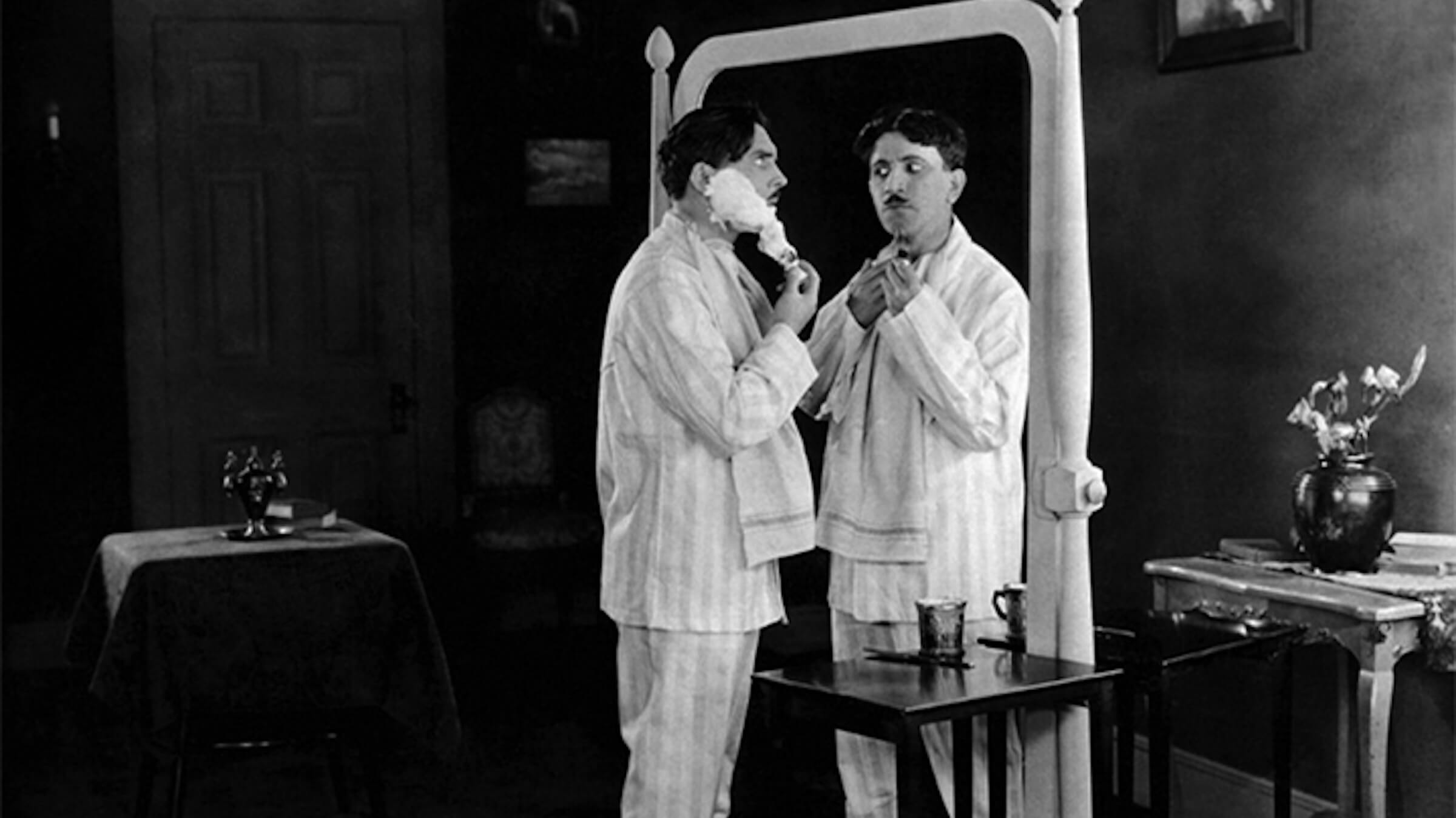Gabriel-Maximilien Leuvielle, better known as Max Linder, began his movie career in 1905. Working for France’s Pathé-Frères until 1914, he made more than 400 films, quickly becoming the studio’s major star, portraying a French dandy, always elegant and usually desperately in trouble while trying to keep his dignity. According to film historian Richard Abel, “Linder’s idea was to impersonate a normal man in situations whose comic force arose from annoyances. The situation, not gestures or acrobatic feats, became the source of laughter.”
Just as his celebrity peaked at the beginning of World War I, Linder left for the battlefront, where he suffered injuries from poison gas attacks. When he returned from the war in 1915, France’s film industry had been reduced to almost nothing and he turned to the U.S. to continue his career. In 1916, Linder accepted an offer from George K. Spoor of the Chicago-based film company Essanay, which was scrambling to make up for the recent loss of its most popular star, Charlie Chaplin. Linder was able to make films on both sides of the Atlantic for the next ten years.
Then, on October 31, 1925, his life ended tragically. Linder had taken an intentional overdose of barbiturates in Vienna the year before and, the following fall, killed his young wife, then himself, in an apparent suicide pact. The untimely death of the French superstar cast a shadow over 20 years of success and left behind only his one-year-old daughter, Maud, who did not know of her parentage until she was 21. A few years after Linder’s death, sound cinema arrived, and silent films were all but forgotten.
Early Pathé productions have been preserved by the company, which owned the negatives, and by the French film archives of the CNC (Centre national du cinéma et de l’image animée). Linder’s name survived as one of the first comic stars of cinema because some of his French films were distributed widely by Pathé in 28mm, 16mm, and 9.5mm, gauges designed for home viewing that came into use in the late teens and 1920s. Even as cinema converted to sound, home projection remained mostly silent. Linder’s films could still be shown to children, who later remembered and kept the legend alive.
In his second sojourn in the States, from 1921 to 1922, Linder made three American feature films under the banner of his own production company. Seven Years Bad Luck, Be My Wife, and The Three Must-Get Theres suffered an even worse fate than his French films. Released in the U.S. as five-reelers, they were abridged for release in Europe. When the American rights to the films expired in 1933, the executor of the Linder estate, who unfortunately knew nothing of cinema, asked for the U.S negatives to be destroyed (he had the European ones already). In 1953, the executor sold the rights back to Maud Linder.
Portions of these American-made films resurfaced in the ’50s, which allowed Linder’s daughter to release Pop Goes the Cork, a compilation film that included the complete Seven Years Bad Luck along with two clips from the other two features. Unfortunately, the images were cropped and projected at sound speed. Be My Wife was later found to survive in two incomplete prints—one at Milan’s Cineteca Italiana and one at France’s Lobster—that completed each other. The two prints were reassembled and restored digitally.
The Three Must-Get-Theres, a sendup of Douglas Fairbanks’s The Three Musketeers, is considered Linder’s American masterpiece. Bombing during World War II destroyed the original nitrate source and the film was long thought to survive only as a condensed 16mm print that had been duplicated from the Gerhard Lamprecht Collection by Germany’s Reichsfilmsarchiv in 1942. Its restoration began with a reconstruction from incomplete German, Dutch, and Russian prints, all deriving from the European four-reel negative—the original five-reel version seems lost forever. It was cleaned up at Lobster Films in 2010, and the only original surviving titles, in German, have been readapted to English based on the style of the day and other related documentation.
Seven Years Bad Luck, Linder’s first American feature, survived in an original 1925 nitrate print discovered in the René Charles collection at Lobster Films. It was enhanced by a few shots taken from a 16mm original Kodascope print produced for home use, which is why brief scenes are in softer focus. Unfortunately, nothing else survives. No complete original print of any of these three American comedies has yet been found in the States.
Despite these flaws, Seven Years Bad Luck is a jewel of comedy. Linder plays his usual “Max” character, trying to convince his girlfriend he is faithful, but, of course, the harder he tries, the less he succeeds. Imaginative, with never a dull moment, it mixes visual art and classic slapstick comedy with surrealistic moments and a special “French touch.” It features an extended “human mirror” gag early in the film that the Marx Brothers later made famous in Duck Soup.
In the early ’20s, Linder was living in Los Angeles and had access to the gagmen working for the likes of Chaplin and Keaton. He had a staff and a leisurely production timeline compared to his rapid-fire schedule in France. He once wrote of making films in the U.S.: “I never fully realized how unimportant is the amount of film used and the number of times a scene is shot. In France, we count the number of meters shot as if there was some set relation to the length of the finished film.” With this newfound insight, he sharpened his scripts as never before. In turn, Linder influenced Chaplin, who once inscribed a photo to the French star, “To the Professor, from his Disciple.”
Presented at SFSFF 2014 with live music by Donald Sosin and Frank Bockius

